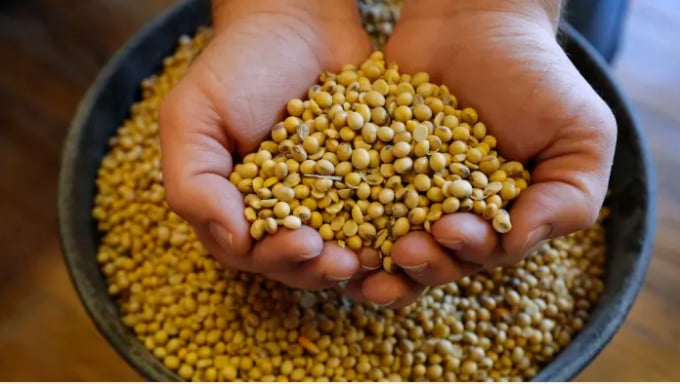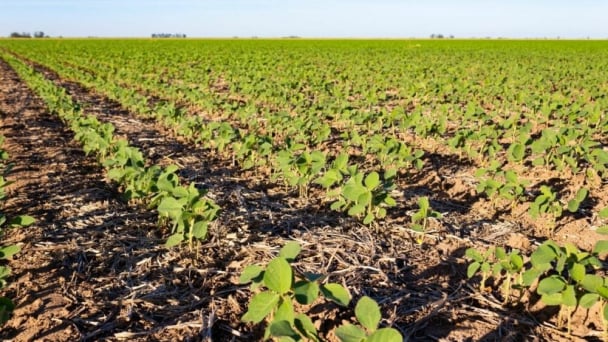May 17, 2025 | 02:21 GMT +7
May 17, 2025 | 02:21 GMT +7
Hotline: 0913.378.918
May 17, 2025 | 02:21 GMT +7
Hotline: 0913.378.918

Brazil’s newly planted crop is likely to yield 121.1m tonnes of soybeans in early 2020, said the agricultural agency Conab. Photo: AP
With storm clouds gathering around input costs, currency fluctuations, an established La Niña and state intervention in many markets, the outlook for farmers, traders and other elements of the agriculture community has looked increasingly worrying.
Brazil’s soybean crop is on course to provide a rare highlight, however, with on-the-ground sources talking of near perfect conditions fostering expectations of a huge crop.
Agricensus rounds-up the state-by-state views on the upcoming historic crop.
Ordem
The country’s soybean planting was 91.5% complete as of November 27 with favourable crop development conditions pointing to a bumper 2021/22 crop despite dryness-related headwinds in the south.
Many analysts have been referring to the “almost perfect” conditions Brazil’s soybeans have faced so far.
The favourable outlook for the largest part of the country comes after concerns that a second consecutive La Niña year could jeopardise Brazil’s crop due to lower rainfall volumes, especially in the south and parts of the southeast.
Dry conditions – a potential effect of La Niña in the centre-south of Brazil – are effectively impacting crop development conditions in the south, especially in Rio Grande do Sul where the lack of moisture may force farmers to replant certain areas.
“In Rio Grande do Sul, the lack of rains has been limiting sowing works… works have been interrupted and some areas even had to be replanted due to low moisture levels and challenges to control weeds,” the country’s food agency Conab said Monday.
That said, the outlook in the south is far from disastrous for soybeans - with no crop losses reported as yet – a marked contrast to the state’s corn crop, for which “losses are unavoidable” according to analysts.
“There are no big issues for soybeans in Rio Grande do Sul,” Agrural’s Daniele Siqueira told Agricensus.
“Recent rains have favoured beans that are already in the ground albeit a reduction in the planting pace this past week as farmers are waiting for more rains during the coming days before planting new areas,” Siqueira added.
Regarding other states in the south, Siqueira said she has been “hearing some complaints from soybean farmers in Santa Catarina and Paraná, especially in the west of the state where beans were planted early, rains are lacking and the weather has been quite warm.”
“However, there are no talks about soybean crop losses in the region, although this is something to be monitored ahead,” Agrural’s analyst added.
Progresso
In the rest of the country, farmers are basically navigating clear blue skies, with soybean areas considered to be under good development conditions across over 90% of the planted area in most regions.

As Brazil’s influence in the soybean market has grown, so too has the importance of the risk factors faced by producers in the United States and Brazil. Photo: EMV
Brazil’s soybean sowing was virtually concluded on November 27 in the centre-west, southeast and parts of the south, with works now concentrated in the northeast Matopiba region and in the south, Conab showed in its weekly crop development report Monday.
According to the agency, 75% of Brazil’s soybean area was in vegetative development state in the week to November 27, 12% emerging, 11% in flowering and 2% in filling of beans.
In Mato Grosso, the main soybean producer in the country, favourable rainfall volumes and early sowing underpin expectations that the state will harvest the largest crop of all time in 2021/22.
“Crop development conditions are positive due to good fieldwork results and sufficient rainfall volumes that came within the forecast window,” the state’s agriculture institute IMEA said in its weekly bulletin on November 19.
“Estimates of a record crop in Mato Grosso are plausible considering the outlook of favourable rainfalls and temperatures in the main producing regions,” the institute added.
In Paraná, soybean planting was virtually concluded as of November 29 with 91% of the crop rated as good, 8% as regular and 1% as bad, the state’s rural economy department Deral showed Tuesday.
In Mato Grosso do Sul, 99% of the crop was rated good with the remainder 1% under regular conditions according to the state’s agriculture and livestock association Famasul.
Conditions are also favourable in the southeast and in the northeast Matopiba region, although beans are mostly at early development stages in the latter.
“It is still early days but planting progress and crop conditions are almost irreproachable in Matopiba,” Siqueira said.
Despite widespread La Niña-related concerns in the beginning of the marketing year, Brazil seems to be on track to deliver the largest soybean crop of its history, estimated at 142 million mt by Conab and 144 million mt by the USDA.
(Agricensus)

(VAN) Fourth most important food crop in peril as Latin America and Caribbean suffer from slow-onset climate disaster.

(VAN) Shifting market dynamics and the noise around new legislation has propelled Trouw Nutrition’s research around early life nutrition in poultry. Today, it continues to be a key area of research.

(VAN) India is concerned about its food security and the livelihoods of its farmers if more US food imports are allowed.

(VAN) FAO's Director-General emphasises the need to work together to transform agrifood systems.

(VAN) Europe is facing its worst outbreak of foot-and-mouth since the start of the century.

(VAN) The central authorities, in early April, released a 10-year plan for rural vitalization.

(VAN) Viterra marked a significant milestone in its carbon measurement program in Argentina, called Ígaris, reaching 1 million soybean hectares measured.